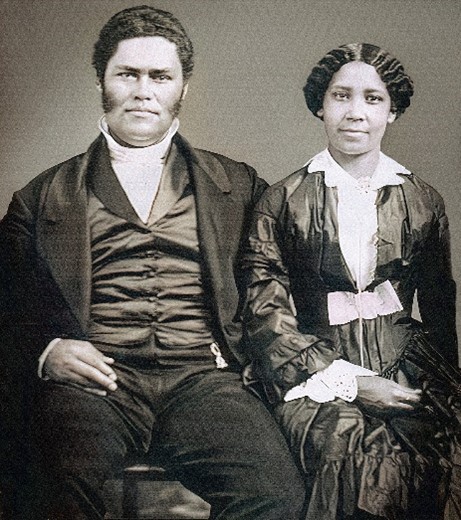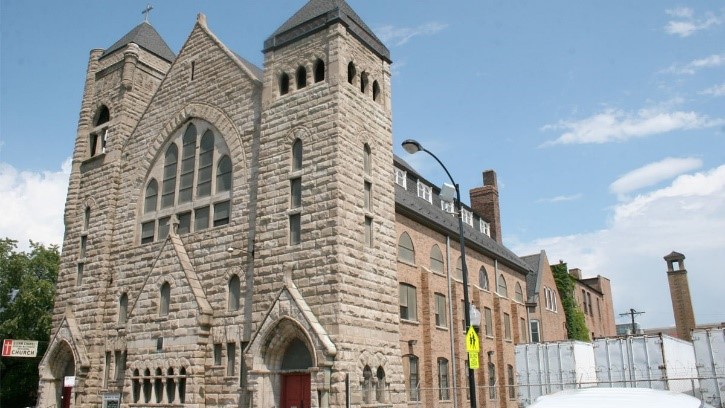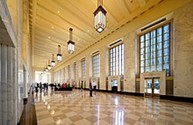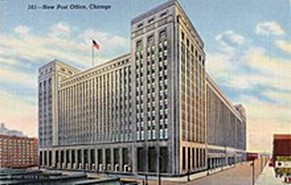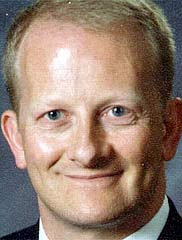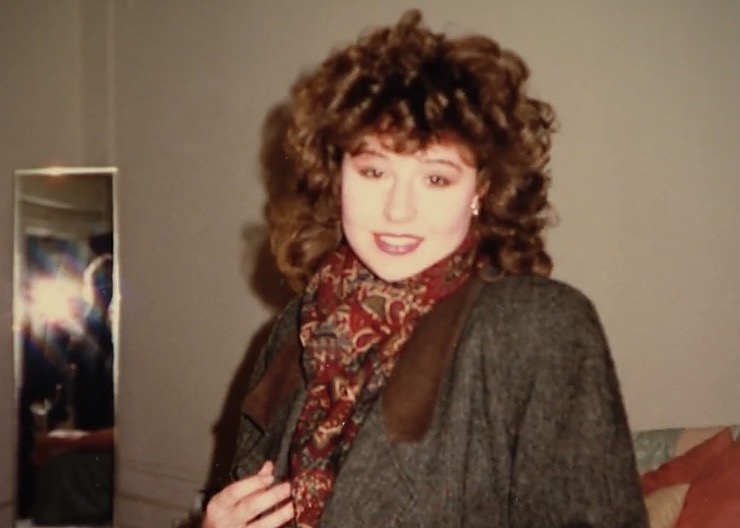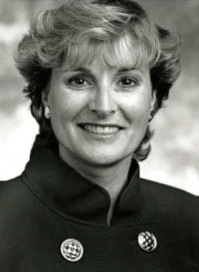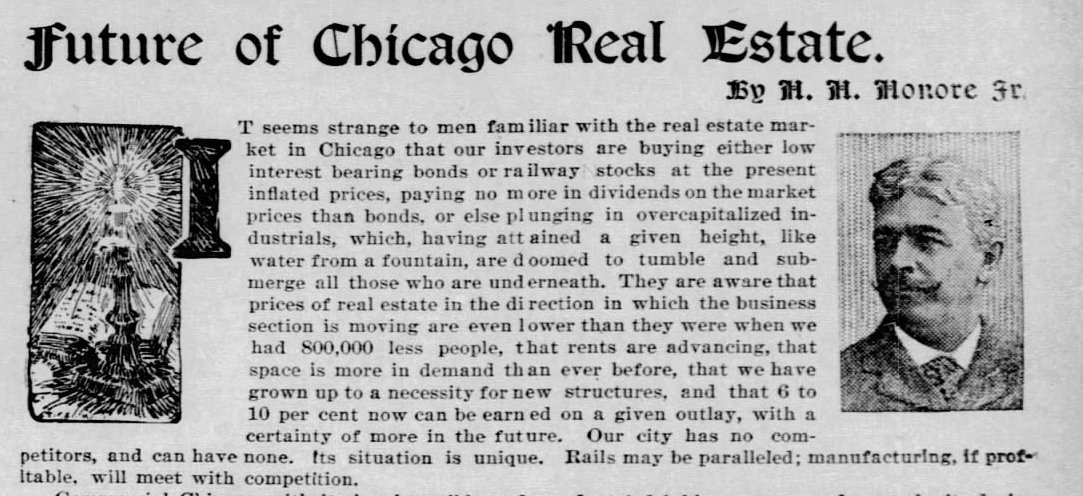This blog is based on our podcast episode: “Queering Chicago’s CRE Market ft. Gerber/Hart Library and Archives. For the best experience, we highly recommend listening to that episode here. An adapted transcript follows below:
Imagine a phone book. For anyone born after the new millennium, picture an encyclopedia or something. Imagine having to peruse that phone book every time you want to travel. If you want to go to dinner, drinks, and dancing, you have to ensure that the restaurant, bar, and club are all queer-friendly and safe. You consult the Pink Pages directory, because you just want to go grocery shopping without feeling like you have to apologize for your gender presentation. Your world is narrowed and limited to a series of addresses, and you know that if you venture outside of it, you risk being harassed, abused, or worse.
One of these books is called the Spartacus International Gay Guide, and I had the distinct honor and privilege of flipping through the guide when I toured the Gerber/Hart library and archives earlier this month. To research this topic, I spoke with Jen Dentel, the G/H Community Outreach and Strategic Partnerships Manager. Gerber/Hart is a LGBTQ+ library and archives located in the Rogers Park neighborhood in Chicago. Founded in 1981, Gerber/Hart is one of the largest repositories of LGBTQ+ content in the world. Gerber/Hart focuses on collecting, preserving, and making accessible the LGBTQ history and culture of Chicago and the Midwest. They’ve also got a podcast called Unboxing Queer History that can be found here.
Jen: “This is like the international gay guide. So it would tell you like the spaces where you could go. For like, safe spaces, or places where you could meet other people, and it’s international.”
Me: “Do they still [circulate] it?”
Jen: “… I don’t know if Spartacus is still going. I’m pretty sure Dameron is still going. I don’t know if we have Recent I’m not sure if Dameron… That’s the thing, is like, so many of these really specialized travel guides, I feel like, with the internet becoming more, like, the, the physical copies, I mean, any travel guide, I feel like those are less common, but, I mean, I see, like, this Spartacus going to 2016, um, I’m sure that there are stuff, well, now we’ve got more Damerons, 2010, yeah, it really, and again, this is all donated, so it’s like, I’m sure there are more recent ones, but we just might get them later … I love The Traveler and there’s like, Gaia’s Guide was a women’s guide, so it’s just really fun to be able to look through and like time travel.”
I asked Jen what she thinks people find most surprising when they tour the archives.
Jen: “I think sometimes people are surprised that the travel guides exist, that those were so, especially like the early, like there’s ones going back to the 60s that we have. And it’s kind of like … the green book … with safe spaces and places people could travel. So yeah, just that there were so many, especially during a time when it was so criminalized that there was this way to find other people, if you could get your hands on the book. … [Also], I think some of the older periodicals, like we have The Ladder, which is the first lesbian magazine nationally distributed in the U.S., so that starts in the 50s … and just the newsletter, I think sometimes people don’t realize [that] small organizations they were part of might be something others would find interesting. So like, there’s a newsletter that was a Chicago queer swimming group called The Smelts. And like, we have all their newsletters.
Me: They have the best names, I swear to God.
Jen: Yeah, and so it’s like, I think sometimes people don’t see that they’re part of that history, so I think that that’s a surprise.”
Jen showed me around the library first, where thousands of books written by and about LGBTQ+ folks are available for anyone to check out anytime.
“Anyone over 13 can check out books … you can check books out for three weeks. There’s no fees. We’re not part of the public library system. So it’s just a form that people fill in … I think it’s up to 10 items at a time.”
Afterwards, Jen showed me multiple rooms filled to the brim with queer Chicago business history.
“[The] Special Collections [is a] mix of stuff. You see the giant tongue. … I feel like it’s become like our mascot. It was from Carol’s Speakeasy, which was a drag bar in Chicago. There is a bar called Carol’s now, which is like a western bar, but there used to be a drag bar, um, and disco. And it was named for Mother Carol, who was known for being super loud. So the mouth was like, ‘loud mouth.’ Um, yeah, I think we got it in 94. And the story we always hear is that when we got it, the tongue was black from all the cigarette smoke. So it had to be, like, cleaned. Um, so I think Erin was saying she thought we had it, like, taken somewhere. I was like, no, it was a volunteer task. We all, like, apparently people pitched in and did it in the 90s. They did a great job … It’s sitting on top of all these posters. So we have an intern right now who’s processing a whole bunch of the posters and just adding more details and photographs about them. Like this was signed by Barbara Giddings, who’s an early activist. And then it’s just a smattering of stuff. So like all of these file cabinets, these are all like magazines or periodicals, newspapers, newsletters. Again, it’s mainly Chicago and the Midwest, but we also have some bigger, like, national publications.”
So, besides the fact that it’s pride month, why should you care about queer Chicago history and gay travel indexes? What does any of this have to do with us? Well, these days the CRE landscape is about so much more than buildings and businesses. It’s about people. It’s not enough to plan for the bare minimum – the cisgender, straight, white, upper middle class man in a suit and tie, commuting from the Gold Coast to his cushy downtown corner office with a briefcase in hand. People are finally starting to see the rich treasure trove of diversity and inclusion within the industry, and our job as professionals is to think two steps ahead when we’re advising our clients.
A 2022 report by the LGBTQ+ Real Estate Alliance found that 46% of respondents reported that they are known specifically as an LGBTQ+ agent, and 40% of respondents said their number of queer retail clients has increased in the last few years. Another 34% reported that LGBTQ+ people make up at least 30% of their real estate “sphere of influence.” At the same time, 41% of respondents reported experiencing discrimination from other real estate agents due to their sexuality, and 29% said they believe they were denied committee assignments and professional advancement opportunities via their local MLS or real estate organizations due to their sexuality.
Last year, a commercial real estate agent named John Combs shared his story about coming out, saying, “I quickly learned, for example, at an annual convention there was a group of LGBTQ+ individuals who quietly met. The group was invited via a blind copy to protect identities. Today, this would not be necessary. The industry has come a long way in 20 years.” DEI initiatives are all well and fine, but too often they’re designed to tip-toe around the topic of queer inclusion, making it difficult for LGBTQ+ people to connect with others like them. In a GlobeSt article, Chely Wright of Unispace states, “we cannot underestimate the significance of having a white, straight, cis male CRE CEO talk about queer issues.”
A global real estate investment firm took this to heart and launched their own PRIDE Network designed to “make the ‘table’ comfortable for those who identify as a member of the LGBTQ+ community, specifically those at officer or C-suite levels, to be authentic and not feel that being out at work will impact their performance within the industry or organization.” For example, the group is working on programming about the use of proper pronouns, dress codes, and creating a network of allies to support these initiatives. One strategy they’ve used is to tap into local student organizations and show aspiring CRE agents that there are abundant opportunities for them, that they can feel safe and be successful at the same time.
Organizations like Gerber/Hart are vital to understanding the queer landscape in Chicago and the Midwest. They’re critical for identifying pot holes in the road to equality. Take for example John Teets, a gay journalist who joined the Chicago Sun Times in 1966. In the 1970s, former minister Roy Larsen, reporter Patricia Anstett, and Teets spent two weeks compiling information on gay business owners, church members, queer nightlife, at-risk and homeless youth, and gay lawyers, in order to educate the public on the prevalence of the gay community in Chicago, showing that the LGBTQIA community should not be treated like an afterthought.
Trailblazing initiatives like GREG – the Gay Real Estate Group – are rarely if ever discussed or promoted for new brokers. The RealDeal stated that “on the residential side, it seems that more brokers are out and open than in the commercial sector — but that could be because residential agents are far more active on social media as a part of their own branding and marketing strategies.” When the Real Deal asked CRE firms to provide a male-versus-female breakdown of their brokers, Elizabeth Ann Stribling-Kivlan, president of Stribling & Associates, was the only one to decline, stating that it’s not her firm’s place to identify its employees by gender.
Additionally, when we talk about or promote the fact that the buildings we represent are landmarks or close to landmarks, we’re doing a massive disservice by not mentioning the numerous sites around the city where queer history was made. And believe it or not, it’s not just Boystown. For example, did you know that the Picasso statue at Daley Plaza is the site of the first Pride March in 1970? Did you know that the Aragon Ballroom used to host Orange Balls and other LGBT+ fundraisers? For those who don’t know, Orange Balls are also known as drag balls or cross-dressing balls, and they date back to the 17th century when gay subculture began to carve space into an otherwise homogenous, heteronormative society. The Medinah Temple on Wabash, too, was once the site of a 1977 protest against singer Anita Bryant’s anti-gay Save Our Children campaign. These are just a few examples of queer landmarks around the city, many of which I’ve walked past countless times and never knew I was standing on hallowed ground.
Chicago is a treasure trove of queer history, but only if you know what you’re looking for. That’s why Gerber/Hart’s work is so critical for all of us – not just allies or business partners looking for a strategic partnership. Just like any other industry, the real estate landscape has been built in part by the tireless and brave efforts of queer leaders, and those brave enough to speak up for those who can’t or won’t speak for themselves. We owe it to ourselves and our clients to educate ourselves on issues that we may or may not identify with. We owe it to this beautiful city to expand our vocabulary and pay tribute to those who made Chicago a safer city for queer folks. So look around. Find your niche. Your people. Don’t assume your your clients, brokers, executives, and associates feel adequately supported and understood. Educate yourself regardless of whether you think you’ll ever need to use that knowledge. That’s how we enact real change. That’s how we make Chicago a better place to live and work, and a safer place to buy and lease. Not just for one month a year, but forever.
To learn more about Gerber/Hart and the sources used for this episode, check out the show notes. This episode is also transcribed on our website, at Willard Jones.com. Thank you again to Jen Dentel and the entire G/H staff who were so welcoming and helpful. And thank you to my boss, who has always embraced me and my identity without judgment.
Sources:
https://archive.ph/12crL
https://realestatealliance.org/Alliance-Report-Discrimination-In-Real-Estate-2022.pdf
https://www.globest.com/2023/07/27/the-lgbtq-communitys-growing-voice-in-cre/?slreturn=20240611102352
http://archive.today/Z8mJM
https://chicago.suntimes.com/columnists/2023/6/16/23750721/lgbtqia-media-gay-beat-hiv-tracy-baim-column-ismael-perez-windy-city-times
https://www.history.com/news/drag-balls-house-ballroom-voguing
